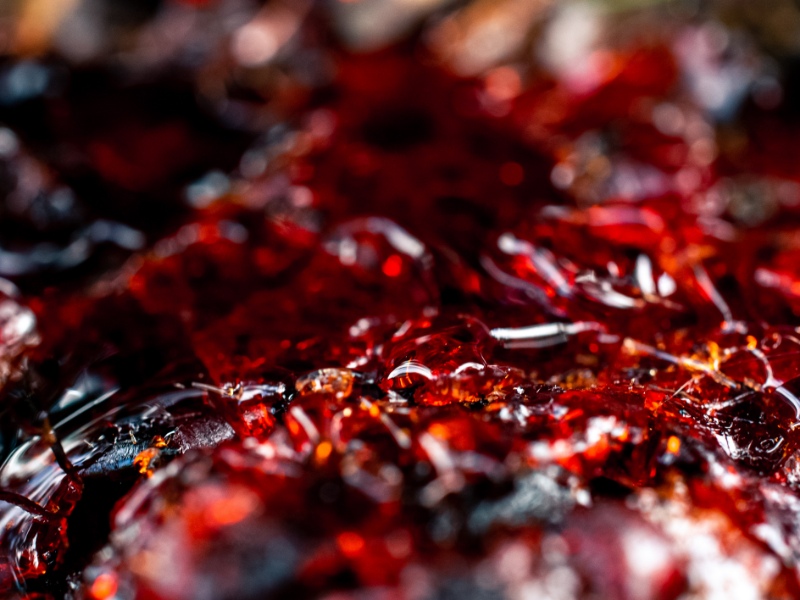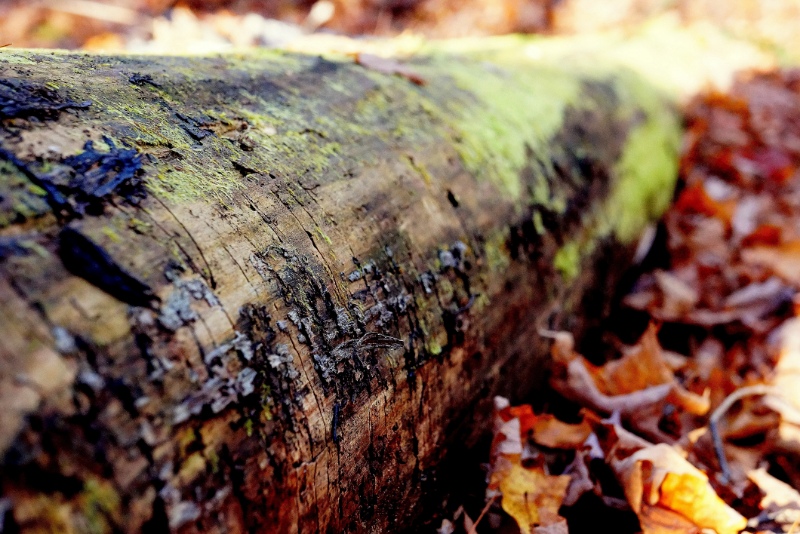Trees and plants produce tree sap, which is a remarkably thick and sticky substance. Whether you consider yourself a true tree hugger or just a casual admirer of nature, finding sap on your clothes or, worse yet, in your hair is no laughing matter. The nagging sap can be removed from your hair in 13 different ways. Find out how to get tough tree sap out of your hair.
What Is Sap
The sap is a liquid substance that can be found in some plants or trees. Nutrient-rich tree sap is used to supply the tree’s branches with energy as new buds emerge in the spring.
Xylem and phloem are the two main components of sap. From the tree’s roots to its crown, the xylem transports water and minerals. The thick, sugary substance known as phloem, which is produced during photosynthesis and accounts for the sticky nature of sap, transports food throughout the entire tree.
Sap sticks to nearly everything it comes into contact with, and shampooing and machine washing alone won’t remove it from your clothing or hair.
How Do You Remove Sap From Hair
When the sap is still sticky and fresh, it can be removed with the least effort. It might be a little more difficult to remove the sap if you let it dry and harden first.
Here are some of the most straightforward methods for getting sap out of your hair.
Creamy Peanut Butter (or Smooth Peanut Butter)
The most common pantry staple, peanut butter, is a cheap alternative that can be used to remove a variety of sticky substances from your hair, including sap.
To try this technique, carefully separate the hair that is being affected, and clip the rest of it back to prevent it from becoming sticky as well.
Use the same quantity of peanut butter as there is sap and gently rub it into the sap with your fingertips. The sap will be softened and broken down by the oil in the peanut butter.
Ten to fifteen minutes should be enough time to let the peanut butter sit in the hair. Massage it frequently and add more if necessary. After washing your hair with your regular shampoo, you should discover that the sap has been completely eliminated.
Mayonnaise
Another cheap ingredient that can be found in most homes, mayonnaise, can also be used to remove the sap from your hair.
Put a dollop on top of the sap and use your fingertips to gently rub it in. It needs to start dissolving the sticky substance right away.
Add more mayonnaise if necessary, and leave it on the hair for about fifteen minutes. Use your usual shampoo to wash your hair, and condition it if you’d like.
Mayonnaise has natural conditioners in it, so after using it to remove sap, your hair will be well-nourished and silky smooth.
Olive Oil
Olive oil is a fantastic product to use to remove sap from your hair. There are no other ingredients because it is just pure oil. The sap’s components will disintegrate due to its oily texture, making removal simple.
Incorporate it into the hair and gently massage the sap using about a tablespoonful (depending on how much sap you are trying to get rid of). The sap should be quickly broken down by the oil, and after a quick wash, it ought to be gone.
Coconut Oil
A natural oil that is incredibly beneficial for both your skin and hair is coconut oil. At room temperature, it is solid, but when heated by the body, it quickly becomes pliable.
A small amount of oil should be used, and it should be gently worked through your fingers until it becomes liquid. For ten to fifteen minutes, rub this on the sap and let it sit.
By this time, the sap ought to be simple to remove and capable of being effectively removed with your regular shampoo.
Mineral Oil
If you decide to use heavy mineral oil to remove sap from your hair, it should work. Apply the mineral oil to the troubled hair, then let it sit for about ten minutes. It will penetrate the sap, making it more malleable and straightforward to remove.
If necessary, gently remove as much sap as you can and reapply more mineral oil. After finishing, wash your hair as usual with your regular shampoo.
Baby Oil
As long as you don’t mind that most baby oils are scented, using baby oil to try and remove sap from your hair can also work well.
Give the sap a light coating of oil and give it a few seconds to absorb. Once it has had a chance to penetrate the sap and start breaking it down, gently try to pull out as much of the sap as you can with your fingers, being extra careful not to damage your hair shafts.
Use your regular shampoo to remove any remaining sap.
Dish Soap
Sap from your hair should be easily removed using a degreasing dish soap, such as Dawn dishwashing liquid. It has a unique formula that was made specifically to get rid of stubborn grease, but it also works wonders on things that are sticky like sap.
Only wet the sappy section of your hair after separating it from the rest. Lather up the sap after applying the dish soap. Apply more soap if necessary after letting the soap sit on the sap for about twenty minutes.
Detangle the sap by gently combing through it with a detangling comb, attempting to remove as much as you can while being mindful not to break the hair. Use your regular shampoo and thoroughly wash your hair after the majority of the sap has been removed.
Heat
Utilizing the heat from a blow dryer may help to soften the sap if it has already set into your hair and made it more difficult to remove.
Heat up the sap by setting the blow dryer to its highest heat setting. To prevent burning or damaging your hair, take extra care to move the blow dryer constantly.
Use a detangling comb to gently try to brush the sap out once it returns to a soft, sticky consistency. As much sap as you can with this method, and if more needs to be removed, use another technique (like oil or peanut butter).
Alcohol
I chose to list alcohol as method number six as opposed to method number one for a reason. Don’t say I didn’t warn you; it’s extremely strong and can harm your hair.
Alcohol application directly is a step beyond for some people who don’t even like to use shampoos or conditioners with very small amounts of alcohol in them. But in desperate times, desperate measures are required!

It might be time to become more militant if you’ve already tried the more moderate methods on this list and the sap is still refusing to budge.
You can use alcohol in the form of rubbing alcohol, alcohol wipes, or spirits with high alcohol content (like vodka). However, anything that has alcohol in it should theoretically function, so you can look through your cabinets to find something appropriate. It’s okay to use hand sanitizer too!
Apply a small amount of the alcohol-based solution (about a tablespoon) to a washcloth, gently work it into the sapped-up area of your hair, and then brush through your hair.
Give your hair a nourishing wash immediately after to lessen hair damage. Use your most opulent shampoo and conditioner.
And if alcohol itself is ineffective? I’ve got one more trick up my sleeve, so don’t freak out.
Acetone-based Nail Polish Remover
Before moving on, let’s be clear about one thing: nail polish remover is not the best product to use to remove tree sap from your hair. It can harm your locks because it is so intensely drying.
Not to mention, you must be extremely cautious in how you apply it. That stuff shouldn’t get in your eyes, you know! But as a last resort, it might be worthwhile to give it a shot if you’ve tried everything else and the sap still won’t budge. Please exercise caution as you move forward.
In the same way that acetone-based nail polish remover is effective at removing difficult-to-remove materials like nail polish, it can also remove practically anything, including super glue. The answer is that acetone, an organic solvent, can dissolve any substance.
Naturally, the sap will be removed from the nail polish more successfully if the nail polish remover contains a higher acetone concentration.
To soften your hair’s sap, dab a few drops of nail polish on a cloth and gently rub the cloth over your hair. Don’t scrub too vigorously, please. Once this appears to be working, brush through your hair to remove any leftovers before washing it.
Honey
Although it might seem strange to use a sticky substance like honey to clean your hair of another sticky substance like sap, it actually works!
Sap can become much easier to remove from your hair thanks to the minerals in honey, which can help break down the sticky components in sap.
Use your fingers to gently massage a small amount of honey into the sap-damaged areas. If more is required, reapply after 20 to 30 minutes of sitting time.
After that, gently try to comb or scrape any sap that may still be present. It ought to easily slide out thanks to the honey. Once all of the sap has been eliminated, wash your hair as usual in warm water.
Another benefit of using honey is that it is a fantastic moisturizer, leaving your hair well hydrated and condition after use.
Wipes
If you’re in a bind, you could try using baby wipes, hand wipes, or eyeglass cleaner wipes to remove sap. If you are out on a weekend camping trip or a hike in the woods and don’t have access to some of the other household ingredients we’ve mentioned, this is a particularly useful technique.
Gently dab the sap-affected area with the wipe, wiping away from the root and downward toward the hair shaft.
This approach might be more labor-intensive than some of the others, but it ought to work, particularly if you can catch the sap while it’s still sticky. Make sure to wash your hair as soon as you are able using your regular shampoo.
Also, make sure you don’t use any household cleaning or disinfecting wipes. These wipes are made of harsh chemicals that might harm your hair or irritate your skin severely.
Degreasing Or Clarifying Shampoo
Shampoos with degreasing and clarifying properties are specially made to effectively clean greasy or filthy hair. They essentially strip the hair of any impurities and can be very harsh if used frequently, but they can be very beneficial when attempting to remove stuck-in substances like sap.
These shampoos are similar to regular shampoos in use and are available at most drugstores. To restore the natural moisture in your hair, condition it after washing.
What If None Of These Methods Work?
If you’ve tried all seven techniques and the sap is still plaguing your hair, it may be that you waited too long to start removing it, which caused it to dry and become more difficult to remove. Bad luck.
The sap has infected a portion of your hair, so your only remaining option is to cut it out. That probably doesn’t sound all that appealing, but surely it’s preferable to constantly having disgusting, sticky gunk in your hair?
Final Words
Although it might be challenging, it’s not impossible to remove tree sap from your hair. You can remove any remaining sap from your hair efficiently and affordably by using a few very basic household items that are typically kept in pantries, medicine cabinets, or refrigerators.

